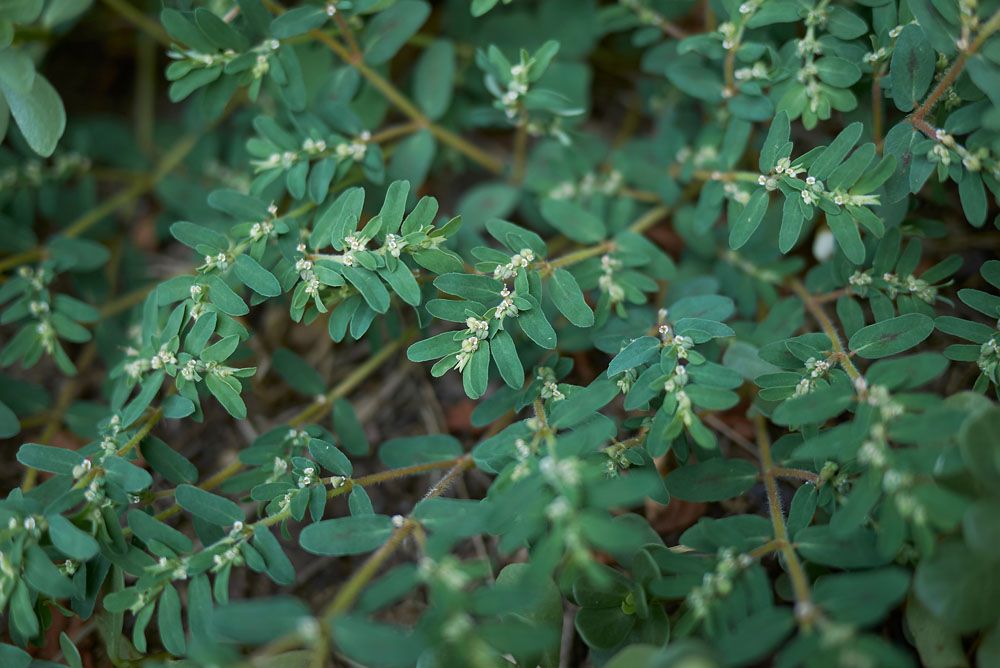
Spotted Spurge
Spotted Spurge: Prevention and Control
What is Spotted Spurge
Spotted spurge is a summer annual that is endemic to the United States. This plant, also known as a spotted sand mat, thrives in sidewalk cracks, roadsides, gardens, and thinning or drought-stressed lawns. It germinates with nothing more than heat, light, water, and a little soil, but it is not particularly competitive under good growth circumstances. Spotted spurge might be a symptom of an underlying condition, such as soil compaction or drought stress. Because it prefers warm, constant air temperatures above 75°F, you’re unlikely to encounter it in the spring.
Individual plants expand outward from a central growth point above a taproot, typically flat against the soil surface. The roots do not form at the nodes of the stems. When the stems are damaged or wounded, they produce a milky white sap that is irritating to the eyes and skin.
Signs and Symptoms
The spotted spurge is easy to identify. Once rooted, each brilliant green plant develops a thick mat that may grow up to three feet in diameter—but mowing it won’t help since it stays low to the earth. Spotted spurge leaves are green, 5/8 of an inch in size, oval, and near to the stem, with a crimson dot. The spotted spurge develops a three-celled fruit with a seed in each cell. Seeds germinate at soil temperatures ranging from 60 to 90 degrees Fahrenheit. Spurge’s fast germination rate allows it to quickly take over a sparse and badly managed lawn.
Spotted spurge grows swiftly via weak spots in your grass because each plant produces thousands of seeds. Even though it’s a summer annual, late-season seeds can emerge the following spring after going dormant over the winter. This warm-weather insect produces seeds just five weeks after germination; thus, early discovery and treatment are critical.
Management
It is quite simple to eliminate spotted spurge. The difficult thing is stopping it from returning. Because of the mat-like appearance of the spotted spurge weed, hand plucking is an effective method for eliminating it from the grass or flower beds. Because of the unpleasant sap, make sure to use gloves. If you don’t eliminate this weed before it has a chance to grow seeds, it will spread quickly. After you’ve hand-pulled the spotted spurge, keep an eye out for it to re-grow from the taproot. As quickly as possible, pull it again. Eventually, the taproot will expend all of its stored energy attempting to rebuild and will die.
Spotted spurge can also be controlled by heavily mulching with either newspaper or wood mulch. Several layers of newspaper or several inches of mulch should be used to cover the ground with spotted spurge. This will prevent the spotted spurge weed seeds from developing and will suffocate any plants that have already begun to grow. Herbicides can also be used; however, many of them are only effective against spurge while the plants are young. Once mature, they can withstand a wide range of weed killers. Herbicides for killing spurge are most effective when used in late spring or early summer when spotted spurge first sprouts.
